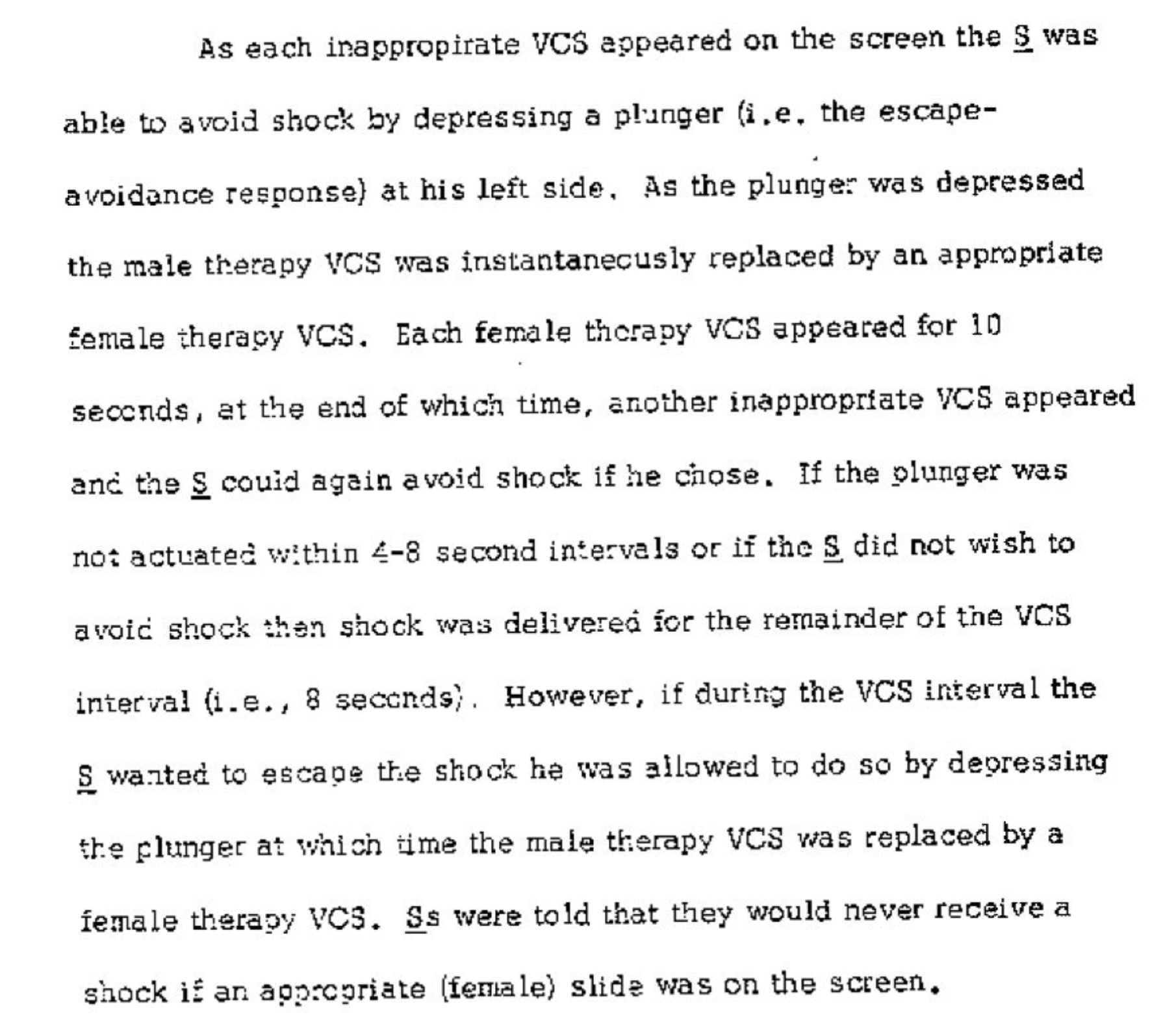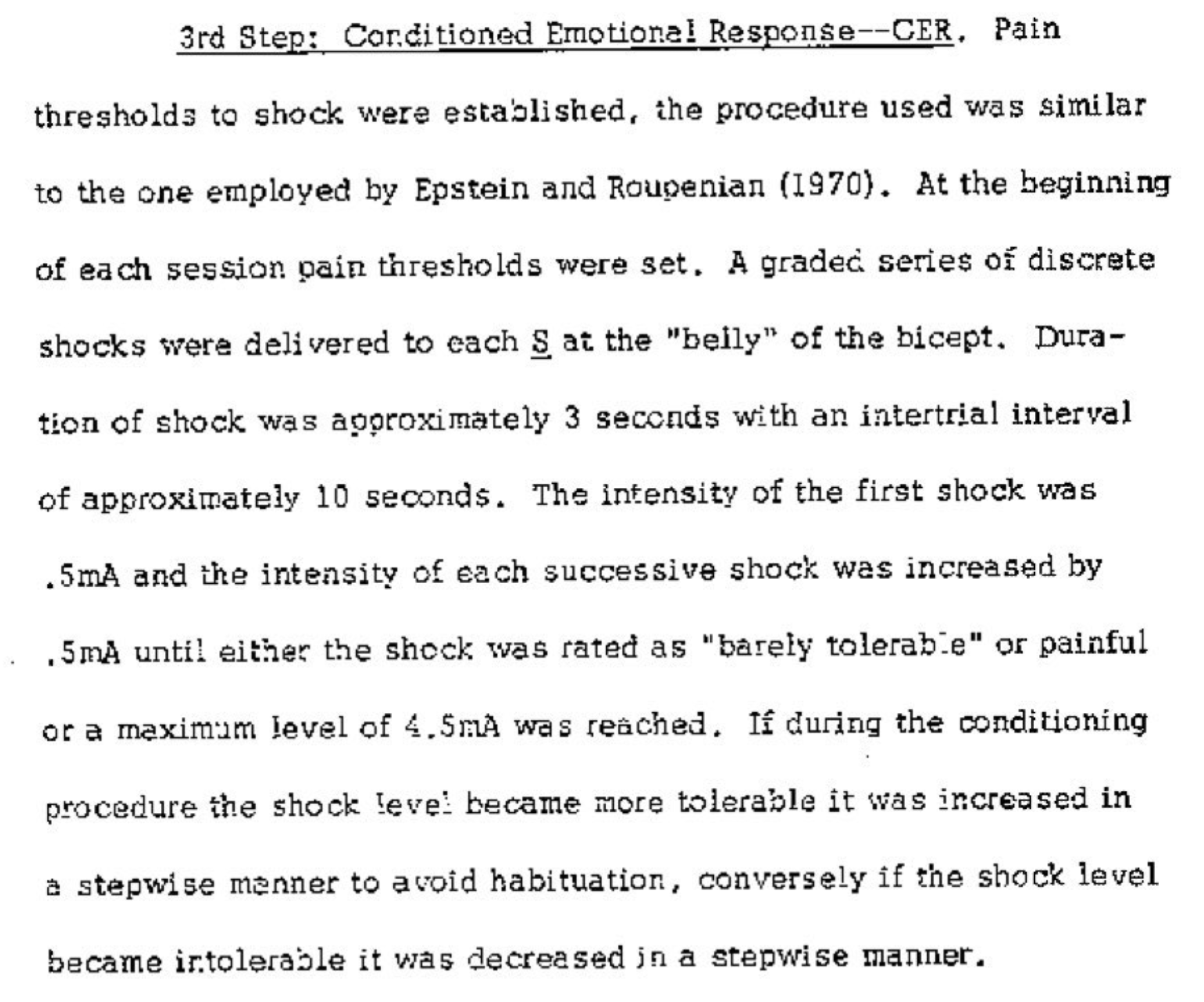McBride study describes how electroshocks were applied; duration of electroshocks varied from 0 up to 8 seconds depending on the phase of the therapy.
- Type
- Academic / Technical Report
- Source
- Brigham Young University LDS
- Hearsay
- Direct
- Reference
Max McBride, "Effect of visual stimuli in electric aversion therapy" PhD Dissertation, Brigham Young University, Department of Psychology, 1976, 47-50
- Scribe/Publisher
- Brigham Young University
- Audience
- Reading Public
- Transcription
3rd Step: Conditioned Emotional Response--CER, Pain thresholds to shock were established, the procedure used was similar to the one employed by Epstein and Roupenian (1970). At the beginning of each session pain thresholds were set. A graded series of discrete shocks were delivered to each S at the "belly" of the bicep. Dura-tion of shock was approximately 3 seconds with an initial interval of approximately 10 seconds. The intensity of the first shock was .5mA and the intensity of each successive shock was increased by .5mA until either the shock was rated as "barely tolerable" or painful for a maximum level of 4.5mA was reached, If during the conditioning procedure the shock level became more tolerable it was increased in a stepwise manner to avoid habituation, conversely if the shock level became intolerable it was decreased in a stepwise manner.
. . .
As each inappropriate VCS appeared on the screen the S was able to avoid shock by depressing a plunger (i.e. the escape- avoidance response) at his left side. As the plunger was depressed the male therapy VCS was instantaneously replaced by an appropriate female therapy VCS. Each female therapy VCS appeared for 10 seconds, at the end of which time, another inappropriate VCS appeared and the S could again avoid shock if he chose, If the plunger was not actuated within 4-8 second intervals or if the S did not wish to avoid shock then shock was delivered for the remainder of the VCS interval (i.e., 8 seconds), However, if during the VCS interval the S wanted to escape the shock he was allowed to do so by depressing the plunger at which time the male therapy VCS was replaced by a female therapy VCS. Ss were told that they would never receive a shock if an appropriate (female) slide was on the screen.
. . .
During this phase it was necessary for the S to depress the plunger three times to avoid shock. All attempts to avoid or escape shock were allowed to succeed immediately.
. . .
During this phase the S did not know the number of times he would have to depress the plunger to avoid shock. Occasionally the escape/avoidance plunger was rendered inoperative or ineffective and attempts to avoid or escape shock were not allowed to succeed.
. . .
During presentation of male therapy VCS, S verbalized his sexual reactions to the slides. While S verbalized to the inappropriate male therapy VCS he received intense shocks on 2 random variable schedule.
- Citations in Mormonr Qnas
The B. H. Roberts Foundation is not owned by, operated by, or affiliated with the Church of Jesus Christ of Latter-day Saints.





